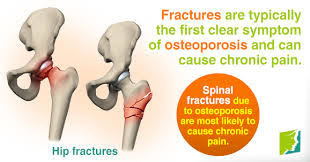Exercise to help maintain normal bone density
Why exercise is vital for bone and muscle health:
- It builds strong bones in youth. It’s estimated a 10% increase of peak bone mass in children can reduce the risk of an osteoporotic fracture during adult life by 50 per cent.
- Exercise plays a key role in adults preventing bone loss and maintaining muscle strength.
- It helps prevent weak bones and falls in the elderly. One-third of people over 65 have a fall each year and the risk of falling increases as age rises.
- People who have suffered fractures can benefit from special exercises and training (under medical supervision) to improve muscle strength and muscle function for greater mobility and improved quality of life.
Exercise for children and adolescents
The prevention of osteoporosis begins with optimal bone growth and development in youth. It is recommended children engage in physical activity for at least 40 minutes a day. This exercise can include sports with a weight-bearing element (cycling and swimming are non-weight-bearing) or activities such as dancing, skipping, running or walking.
Weight-bearing exercises build bone density and mass, making them stronger and less vulnerable to osteoporosis later in life. Building bone density and mass is particularly important for young people aged 8 to16.
Research has shown physically active young girls gain about 40% more bone mass than the least active girls of the same age2. In girls, the bone tissue accumulated during the ages of 11 to 13 approximately equals the amount lost during the 30 years following menopause3.
Exercise for adults
It is important for adults to engage in regular exercise in order to prevent bone loss and maintain muscle strength. The amount and type of exercise will vary depending on your age and bone health.
Exercise should be individually tailored to your needs and capabilities. Overall, most people should aim to exercise for 30 to 40 minutes three to four times each week, with some weight-bearing and resistance exercises in the program.
Studies have shown people with a sedentary lifestyle are more likely to have a hip fracture than those who are more active. For example, women who sit for more than nine hours a day are 50% more likely to have a hip fracture than those who sit for less than six hours a day7.
Exercise for the elderly
It is important the exercise you choose is suited to your age and health condition. We recommend consulting a medical professional about what is right for you. In older adults, weight-bearing exercise helps maintain bone density. Exercise is especially important for older women, who have a higher rate of bone tissue loss after menopause.
Exercise builds muscle tone and improves balance, thereby preventing falls, which are a major cause of osteoporotic fractures.
Exercise can also play a crucial role in rehabilitation. Muscle strength and bone strength are related. Muscle strengthening exercises can help to rebuild bone in those who have developed osteoporosis, and can also provide relief from pain. People with osteoporosis or previous fractures should consult their medical professional before embarking on an exercise program.
Posture and balance
Numerous studies have proven that people with better posture, better balance, and greater muscle power are less likely to fall and are therefore less likely to be injured.
Research show for women over 80 years old, and individually tailored exercise regimen that incorporates progressive muscle strengthening, training for balance, and a walking plan, can reduce the overall risk of falling by about 20%, and cut serious injury-sustaining falls by just over 30%7.
The balance aspect of this training is important. A study has revealed patients practising Tai Chi, a Chinese exercise focused on balance, fall only half as much as their peers. This significant improvement was achieved after only 15 weeks, during which the patients received one Tai Chi lesson per week with an instructor and were asked to practice twice daily for 15 minutes on their own.
Exercise aids rehabilitation
Exercise also plays a crucial role in rehabilitation. Muscle strengthening exercises can help to rebuild bone in those who have developed osteoporosis, and they can also provide relief from pain.
Kyphosis (Dowager’s Hump)
Chronic pain is most problematic in people with kyphosis (also known as dowager’s hump), which is a curvature of the spine most often due to osteoporotic fractures of the vertebrae.
Kyphosis causes loss of height, poor posture, and a shift in the centre of gravity. In the worst cases, the curvature of the spine is so severe the rib cage is pressed against the pelvis. Forced into this posture, patients can suffer severe pain and have trouble breathing.
Exercise can help relieve the pain and some of the symptoms of kyphosis. By strengthening the muscles in the back, the spine can be brought more upright. This has been shown to increase mobility and reduce pain8. This type of therapy can greatly improve the quality of life of the patient.
Hip fractures
Hip fractures may be the most serious complication that can arise from osteoporosis. More than 95% of patients require surgery to repair their hip fracture, and of these, fewer than one-third will regain normal functioning, and a further one-third have to give up independent living and need constant care.
Recent studies have shown that intensive exercise training can lead to improvements in strength and function in elderly patients who have had hip replacement surgery9. Patients who received the exercise therapy were significantly better at a variety of daily living fundamentals, such as getting up, walking, climbing stairs and maintaining posture.
For example, they walked on average 50% faster and climbed stairs about 30% faster than patients who did not receive the exercise regimen. Emotionally, patients who had received the exercise therapy were less distressed by their overall condition than patients who did not, although both groups of patients were equally as fearful of falling9.
References
1. Khan K, McKay HA, Haapasalo H, Bennell KL, Forwood MR, Kannus P, Wark JD. (2000) Does childhood and adolescence provide a unique opportunity for exercise to strengthen the skeleton? J Sci Med Sport. 3(2):150-164
2. Lehtonen-Veromaa M, Mottonen T, Heinonen OJ, et al. (2004) Influence of physical activity and vitamin D on bone mineral gain among peripubertal Finnish girls: a 3-year prospective study. Osteoporos Int 15(Suppl.1):S13-S18
3. Bonjour P. Invest in Your Bones: How diet, lifestyles and genetics affect bone development in young people. International Osteoporosis Foundation 2001
4. Vico L, Collet P, Guignandon A, Lafage-Proust MH, Thomas T, Rehaillia M, Alexandre C. (2000) Effects of long-term microgravity exposure on cancellous and cortical weight-bearing bones of cosmonauts. Lancet 355:1607-1611
5. Sinaki M, Itoi E, Wahner HW, Wollan P, Gelzcer R, Mullan BP, Collins DA, Hodgson SF. (2002) Stronger back muscles reduce the incidence of vertebral fractures: a prospective 10 year follow-up of postmenopausal women. Bone 30:836–841
6. National Institute for Clinical Excellence, Clinical Guideline 21, developed by the National Collaborating Centre for Nursing and Supportive Care, Nov. 2004
7. Pfeifer M, Sinaki M, Geusens P, Boonen S, Preisinger E, Minne HW for the ASBMR Working Group on Musculoskeletal Rehabilitation. (2004) Musculoskeletal rehabilitation in osteoporosis: a review. J Bone Miner Res 19:1208-1214
8. Malmros B, Mortensen L, Jensen MB, Charles P. (1998) Positive effects of physiotherapy on chronic pain and performance in osteoporosis. Osteoporos Int 8:215-221
9. Hauer K, Specht N, Schuler M, Bartsch P, Oster P. (2002) Intensive physical training in geriatric patients after severe falls and hip surgery. Age Ageing 31:49-57
Other resources:



